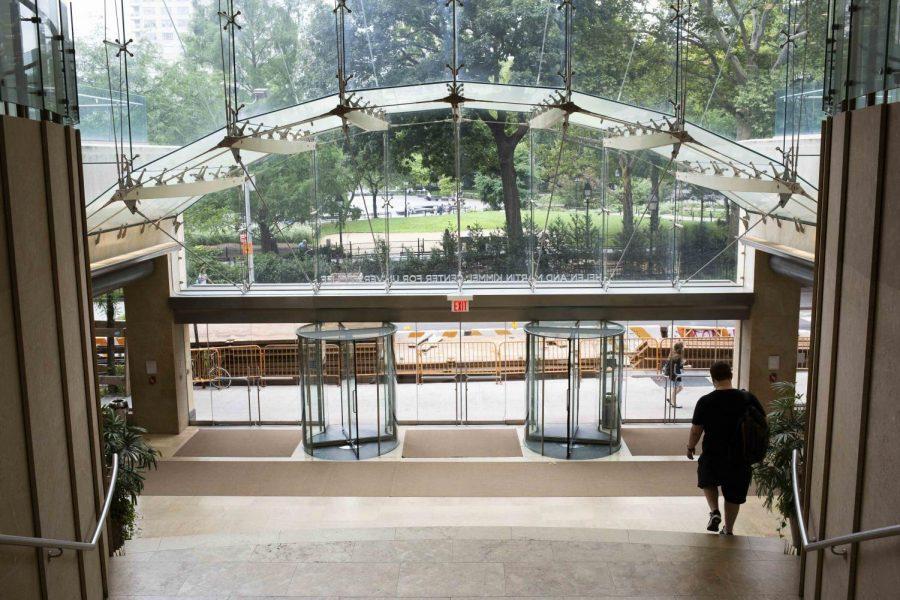A program meant to help students unable to afford their next meal will provide five meal swipes and 25 Dining Dollars, instead of no meal swipes and 75 Dining Dollars, according to NYU administrators.
The Courtesy Meals Program began in fall 2016 after students struggling to afford food brought the issue to administrators. After a working group was formed, the CMP was devised as a way to aid food-insecure students in the short-term, providing them with 75 Dining Dollars, no questions asked. Students access the program by going in-person to one of 10 locations across NYU: three on Tandon’s Campus and seven on the Washington Square Campus. Once there, the Dining Dollars are directly added to a students account.
In the past, although students would never be turned away, they would be referred to other resources upon using the program more than three times. The program is set to change in two ways: students will receive five meal swipes and 25 Dining Dollars instead of the 75 Dining Dollars, and those who use the program a third time will be required to make future requests through the Wellness Exchange or Financial Education.
Because the shift will require changes to NYU’s software, it will take time to put in place. Senior Vice President for Student Affairs Marc Wais said it would hopefully take place sometime this semester.
“This change is designed to help ensure that students with ongoing food insecurity issues, and/or other related issues, can meet with staff members with professional expertise who will then be positioned to provide assistance going forward as needed,” Wais said in an email.
Wais consulted SGA Chairperson Jakiyah Bradley, who was previously a Senator at-Large for students experiencing food insecurity, and collected student feedback on the changes through a Google form.
When asked whether requiring students to go to specific sites might discourage usage due to stigma, a common problem for initiatives meant to address food insecurity, Bradley said potential discouragement must be balanced with an increased ability to help.
“Connecting students to resources while also acknowledging that some barriers may unintentionally arise is always a balance,” Bradley said in an email. “This change to Courtesy Meals is an attempt at this balance.”
Bradley said student feedback on the potential changes was positive, leaving her encouraged. Still, she hopes to gather more feedback and address any issues that arise once the changes are in place.
The idea for the changes came when, over the summer, Wais and Associate Vice President of Campus Services Owen Moore analyzed data on last years’ usage of the program, according to Bradley.
Data from the fall 2018 semester — the first during which the program was heavily publicized — suggest that most students use the program once or twice in a semester. In the fall, first-time uses made up 91% of the total.
Steinhardt Clinical Associate Professor of Nutrition Domingo Piñero said first-time users, the vast majority, will be better helped by the five meals and 25 Dining Dollars package than the previous package. Still, Piñero said the minority of students using the program multiple times a semester are those who need the most help.
“The people that you truly do not want to miss are those using it three or more times,” Piñero told WSN. “It may be a small percent, but those are the people with more serious issues.”
Like Bradley, Piñero worries about creating any barriers to students in need of help, especially those who are using the program more than three times.
“My fear is, I understand the process to help them, but the key is how do they get there?” Piñero said. “How easy is it for them to get there?”
Piñero suggested that, especially now that the program will provide a substantial amount of meals, NYU should focus on increasing access for students. NYU has a website with information on the program, and last included it in an email to students on Sept. 17.
Piñero mentioned that advisors, who regularly meet with students, could serve as a bridge to connect students to the CMP. Even better, Piñero said, would be providing students something they could click on from one of their frequently used sites, like Albert. This way, students would not have to go in-person immediately, and the program would be more visible.
“[It should be] in a place where students have an easy access,” Piñero said. “This needs to come to the surface.”
Email Victor Porcelli at [email protected].























































































































































